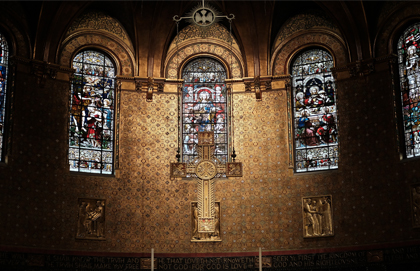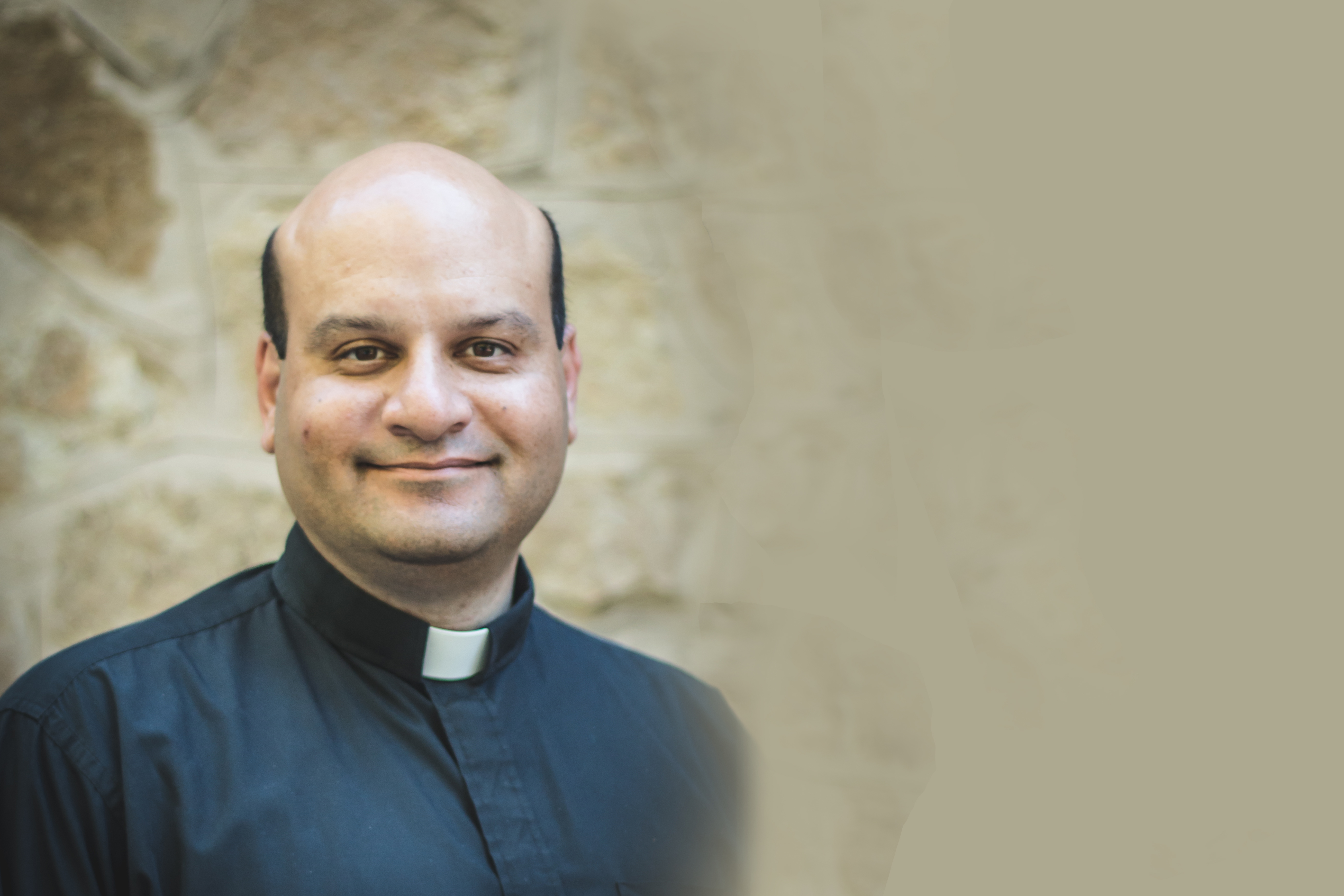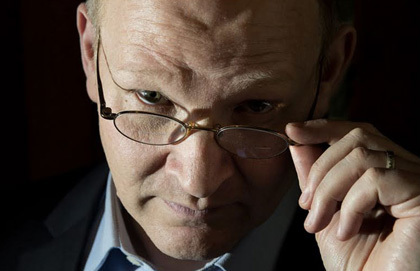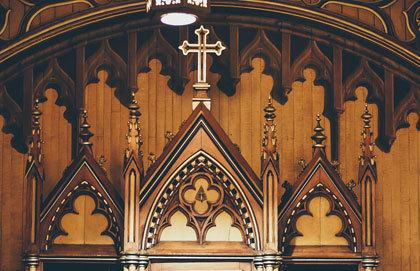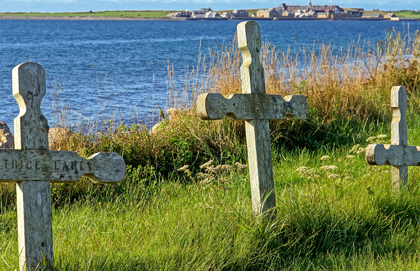A few weeks back the Cardus team in Ottawa gathered for the ordination of our colleague Andrew Bennett, now a deacon of the Ukrainian Greek Catholic Church. It was a solemn and joyous occasion, and also an introduction for many to the Byzantine tradition of worship. It was my first time visiting the Ottawa shrine of St. John the Baptist, which, proper to the Eastern tradition, is resplendent with sacred icons.
An icon is not just a painting. It is to be understood as making present in a certain way the glory of God, reflected also in His saints. We look upon the icon and certainly admire its aesthetic beauty, but we are meant to look through the icon as well, as we might look through the veil to the face of the bride who wears it.
All of which provides the occasion to make a plea – to Christian writers at least – to stop using the regrettably ubiquitous adjective “iconic.” It is employed far too often, and rarely with its proper meaning.
The parishioners at St. John the Baptist provided a warm welcome and a festive meal after the ordination, so it was not necessary, for example, to head down to the Market for Beavertails. Every culture has its version of deep-fried dough, and you will not be surprised to learn that the Beavertail is now a “deep-fried icon of the [Ottawa] Valley.”
BeaverTails “have been recognized for their iconic pastries by everything from National Geographic to USA Today.” Deep fried dough is of course heavenly, one of those primordial blessings not lost in the fall of man. But it is not, strictly speaking, an icon.
Not just anything can be an icon, which is presumably why BeaverTails threatened legal action against Calgary food writer, Julie Van Rosendaal, who had a recipe on her blog called “beavertails” while giving credit to the copyright holder. She should have known not to mess with Big Dough – as one does not mess with Big Tobacco, or Big Pharma, or Big Oil.
Big Dough’s lawyers slapped her blog down, and when she offered to call her confection Beaver Doughnuts, they refused. The beaver itself is iconic. So the recipe is now for Canadian Semiaquatic Rodent Posterior Doughnuts. You may not give a rat’s patootie, but the custodians of iconic brands do.
Icons abound, even in the concrete heart of Canada’s largest city. Toronto has instituted a new traffic pattern for King Street downtown, more or less aimed at making driving on King so Hellish that cars will relinquish the road entirely to the streetcars. Herewith the explanation from the 2016 King Street Visioning Study: “[It’s] about reimagining bold transformative ideas for how to reallocate space in the right-of-way to create an iconic street in the heart of Downtown Toronto.”
The streetcar might be a sort of reverse icon, in that it actually inflicts pain upon those who behold it. But a street is not an icon, and by definition the transit authorities of Toronto are incapable of writing icons. (One doesn’t paint icons, but rather “writes” them, and then only after long preparation by the writer in prayer.)
Last September the “iconic singer Neil Young” was spotted in Peterborough. It is hard to imagine anyone gazing upon the visage of Neil Young and seeing the glory of God, but there is some truth to it. Every person, made in the image and likeness of God, is something of an icon of the divine. St. John Paul taught that the human body – even Neil Young’s body – is an icon of the person. The body makes visible the reality of the person, which is both body and soul, matter and spirit.
Though Neil Young appears to be indestructible – not for lack of trying, one surmises – other icons are targets for destruction. No, we are not talking about communists firing shots at statues of Jesus during the Spanish Civil War – a literal iconoclasm – but the demolition of recent icons. The “iconic” Pontiac Silverdome was reduced to rubble near Detroit earlier this month, just a few weeks after the “iconic” Georgia Dome was demolished.
The Georgia Dome was described as a “historic” facility, opening way back in 1992. Like icons, history is not what it used to be. The Georgia Dome was replaced by a $1.6 billion stadium only 30 yards away.
As an aside, why do other cities get to demolish their stadiums and Montreal’s Olympic Stadium is still standing?
There are of course real icons described as such. Leonardo da Vinci’s painting Salvator Mundi sold recently at auction for $450 million, or about a quarter of the cost of Atlanta’s new playground for the rich and richer.
“Salvator Mundi is a painting of the most iconic figure in the world by the most important artist of all time,” said Loic Gouzer of Christie’s, which handled the auction. “The opportunity to bring this masterpiece to the market is an honour that comes around once in a lifetime.”
I am not sure that selling an image of the Saviour of the World to Saudi Arabia’s crown prince has, strictly speaking, any true honour about it. It is a well-remunerated transaction to be sure, but the honour for icons belongs to those represented.
Jesus though, according to Christie’s and divine revelation, is indeed the “most iconic” figure in the world. Indeed, whoever has seen Jesus has seen the Father (cf. John 14:9), which is rather the definition of an icon.
Whether icons should be made or not was a much controverted issue in the first Christian millennium. Did it violate the Ten Commandments and the prohibition on graven images? After the rise of Islam in the 7th century, with its strict proscription of all sacred images, the Christian Church wrestled with the issue. At the second ecumenical council of Nicaea in 787 the issue was resolved in favour of iconography: if God made Himself visibly incarnate in Jesus Christ, then it was permissible to make images of the divine. Thanks be to God for that, otherwise the Byzantine tradition of iconography would have been replaced with the Islamic tradition of calligraphy.
Today, we need more icons and less of things described as iconic. Iconoclasm is not our tradition. But it’s time for a new iconic-clasm.
Convivium means living together. We welcome your voice to the conversation. Do you know someone who would enjoy this article? Send it to them now. Do you have a response to something we've published? Let us know!


